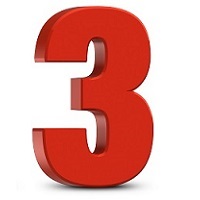
It is day three of our 12 Days of Christmas Posts and we bring you a special guest post, The 3 Ghosts of Christmas Healthcare Data Exchange: Past, Present, and Future.
 The era of health data exchange is going through transformation that is similar to Charles Dickens’ holiday classic “A Christmas Carol.” We have been faced with three ghosts of Christmas health data exchange that can show us the past, present, and future … and we should listen closely as Ebenezer Scrooge did in this timeless tale.
The era of health data exchange is going through transformation that is similar to Charles Dickens’ holiday classic “A Christmas Carol.” We have been faced with three ghosts of Christmas health data exchange that can show us the past, present, and future … and we should listen closely as Ebenezer Scrooge did in this timeless tale.
By Buff Colchagoff, CEO, RosettaHealth
Twitter: @rosettahealth
Twitter: @BuffColchagoff
Health data exchange is going through a transformation as surely as Scrooge did in the Charles Dickens’ classic “A Christmas Carol.” It is often hard to see or predict a transformation while in the middle. But, as in the holiday classic, visiting the three ghosts of past, present, and future can open up your eyes to possibilities long ago forgotten.
Now, before you declare the chance of something new in healthcare exchange a “Bah! Humbug!” I invite you to set aside your cold, cynical bowl of gruel, and visit the ghosts with me.
The Ghost of Healthcare Data Exchange Past
Behold the bloated ghostly image of healthcare data exchanges past! “Costly and ineffective be that spectre!” I hear Scrooge saying. Indeed, connections were made on a site-to-site basis, and were expensive, handcrafted, and customized. To setup an exchange between two hospitals required at least months, and often years, to fully implement. The effort required a large team of IT experts. Standards were looser, requiring crafting and frequent “tinkering” of the content being exchanged. And God forbid … a patient wants to acquire their digital data, or exchange it. There were so many roadblocks as to make it nearly impossible!
As a result, true health data exchange only happened in mission-critical use cases between large organizations with enough budgets to support it. These were mainly limited to large healthcare systems, IDNs or hospitals. The ambulatory landscape was a wasteland, only inhabited by the ancient, analog fax. And forget about patient participation — promising patient efforts like Google Health or Steve Case’s Revolution Health died on the vine in this environment. In short, healthcare data exchange was seen as risky, time consuming, and costly – only to be attempted when the political will, budget, and resources would allow.
The Ghost of Healthcare Data Exchange Present
Today’s ghost looks better: thinner, and more capable. Health data exchange costs and labor have dropped, due to leveraging tools like healthcare-specific interface engines. These tools abstract the effort to exchange data and help enforce standards out of the box. Today’s standards have been exercised “on the court,” and are iterated and evolved. They are also stronger, more universal and have many more players involved. This has made these standards adapted and applicable across a range of organizations and use cases. In this environment, some many-to-many networks have emerged as operational. Patients have also mandated patient portals that allow access to their data.
However, there are many challenges. Patients suffer from “portalitis” with different portals, credentials and data at each provider they visit. The many-to-many networks have had less impact and data-flow than imagined. And most data exchange remains site-to-site. Skilled staff and specific infrastructure (such as VPNs and hosted applications) are needed to implement and maintain exchanges. The associated costs of this type of exchange are enough to keep truly ubiquitous exchange elusive.
Today’s ghost of health data exchange is making things work on a limited basis. The ghost of the present is improved, and surely less inconvenient than the past, but not the vision one could imagine.
The Ghost of Healthcare Data Exchange Future
Now, behold the “Ghost of Healthcare Data Exchange” future … what an alluring image! In the future, the idea of exchanging health information is no more a burden than the thought of sending an email – it will be simple, secure, inexpensive and ubiquitous. It will become more of a commodity, and less of an enterprise capability or infrastructure.
This shift means healthcare exchange will require no more labor and costs than providing corporate email. All the complexity of exchange security, routing, storage, encryption, translations, etc. will be hosted in cloud-services and represent little burden on any care setting — be it inpatient, ambulatory, home, or post-acute care.
You may be asking yourself the same as old Scrooge: “Are these the shadows of the things that Will be, or are they shadows of the things that May be, only?” — Charles Dickens (1843)
Well, I can assure you that this transformation is occurring right now. Just as in A Christmas Carol, the transformation doesn’t require a lot of time – only a willingness to embrace change.
In healthcare data exchange, it’s easy to be wary about moving away from the lessons of the past. But there’s a bright new future, if you are willing to embrace it. The coming years will surely present new challenges … how will you address them?
By looking to the past, present or future?
